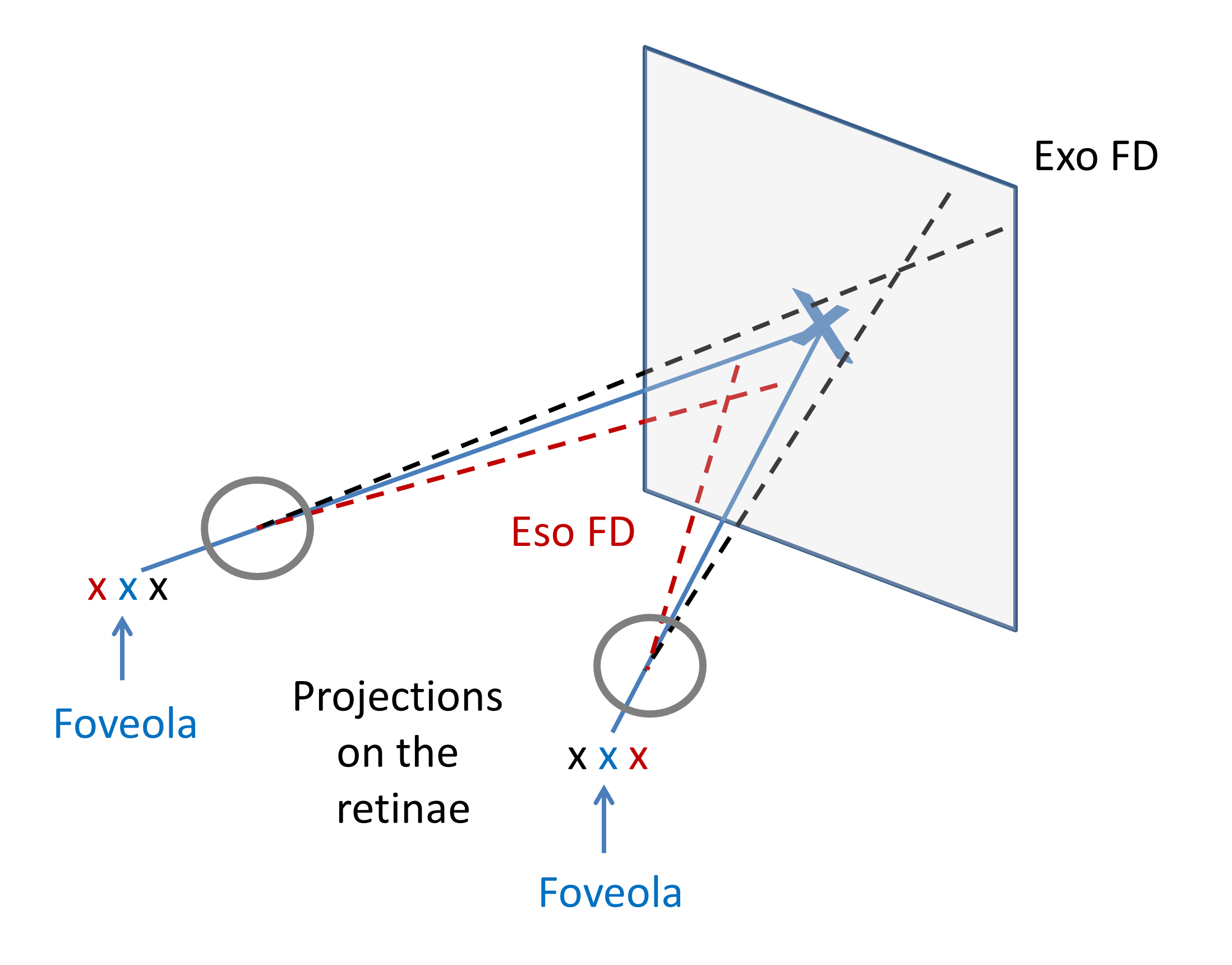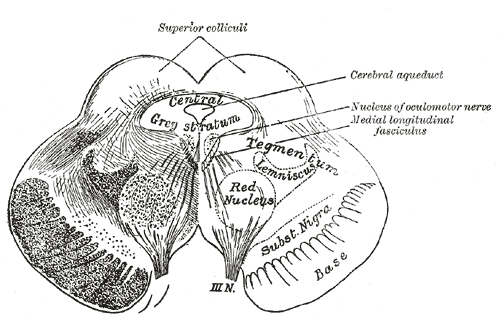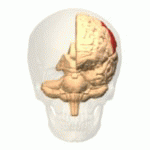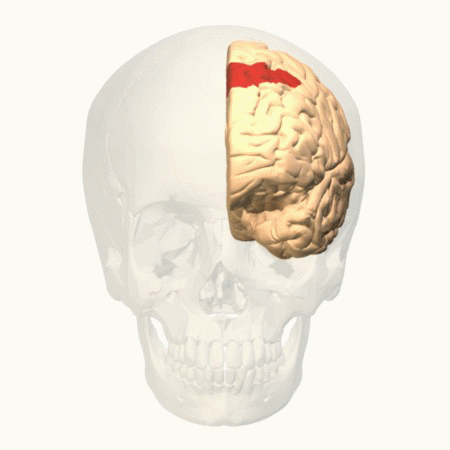|
Microsaccade
Microsaccades are a kind of fixational eye movement. They are small, jerk-like, involuntary eye movements, similar to miniature versions of voluntary saccades. They typically occur during prolonged visual fixation (of at least several seconds), not only in humans, but also in animals with foveal vision (primates, cats, dogs etc.). Microsaccade amplitudes vary from 2 to 120 arcminutes. The first empirical evidence for their existence was provided by Robert Darwin, the father of Charles Darwin. Function The role of microsaccades in visual perception has been a highly debated topic that is still largely unresolved. It has been proposed that microsaccades correct displacements in eye position produced by drifts, although non-corrective microsaccades also occur. Some work has suggested that microsaccades are directly correlated with the perception of illusory motion. Although microsaccades can enhance vision of fine spatial detail, they can also impair visual perception in that t ... [...More Info...] [...Related Items...] OR: [Wikipedia] [Google] [Baidu] |
Fixational Eye Movement
Fixation or visual fixation is the maintaining of the gaze on a single location. An animal can exhibit visual fixation if it possess a fovea in the anatomy of their eye. The fovea is typically located at the center of the retina and is the point of clearest vision. The species in which fixational eye movement has been verified thus far include humans, primates, cats, rabbits, turtles, salamanders, and owls. Regular eye movement alternates between saccades and visual fixations, the notable exception being in smooth pursuit, controlled by a different neural substrate that appears to have developed for hunting prey. The term "fixation" can either be used to refer to the point in time and space of focus or the act of fixating. Fixation, in the act of fixating, is the point between any two saccades, during which the eyes are relatively stationary and virtually all visual input occurs. In the absence of retinal jitter, a laboratory condition known as retinal stabilization, perceptions ... [...More Info...] [...Related Items...] OR: [Wikipedia] [Google] [Baidu] |
Fixation (visual)
Fixation or visual fixation is the maintaining of the gaze on a single location. An animal can exhibit visual fixation if it possess a fovea in the anatomy of their eye. The fovea is typically located at the center of the retina and is the point of clearest vision. The species in which fixational eye movement has been verified thus far include humans, primates, cats, rabbits, turtles, salamanders, and owls. Regular eye movement alternates between saccades and visual fixations, the notable exception being in smooth pursuit, controlled by a different neural substrate that appears to have developed for hunting prey. The term "fixation" can either be used to refer to the point in time and space of focus or the act of fixating. Fixation, in the act of fixating, is the point between any two saccades, during which the eyes are relatively stationary and virtually all visual input occurs. In the absence of retinal jitter, a laboratory condition known as retinal stabilization, percept ... [...More Info...] [...Related Items...] OR: [Wikipedia] [Google] [Baidu] |
Visual Perception
Visual perception is the ability to detect light and use it to form an image of the surrounding Biophysical environment, environment. Photodetection without image formation is classified as ''light sensing''. In most vertebrates, visual perception can be enabled by photopic vision (daytime vision) or scotopic vision (night vision), with most vertebrates having both. Visual perception detects light (photons) in the visible spectrum reflected by objects in the environment or emitted by light sources. The light, visible range of light is defined by what is readily perceptible to humans, though the visual perception of non-humans often extends beyond the visual spectrum. The resulting perception is also known as vision, sight, or eyesight (adjectives ''visual'', ''optical'', and ''ocular'', respectively). The various physiological components involved in vision are referred to collectively as the visual system, and are the focus of much research in linguistics, psychology, cognitive s ... [...More Info...] [...Related Items...] OR: [Wikipedia] [Google] [Baidu] |
Saccade
In vision science, a saccade ( ; ; ) is a quick, simultaneous movement of both Eye movement (sensory), eyes between two or more phases of focal points in the same direction. In contrast, in Smooth pursuit, smooth-pursuit movements, the eyes move smoothly instead of in jumps. Controlled cortically by the frontal eye fields (FEF), or subcortically by the superior colliculus, saccades serve as a mechanism for focal points, rapid eye movement, and the fast phase of optokinetic reflex, optokinetic nystagmus. The word appears to have been coined in the 1880s by French ophthalmologist Louis Émile Javal, Émile Javal, who used a mirror on one side of a page to observe eye movement in silent reading, and found that it involves a succession of discontinuous individual movements. Function Humans and many organisms do not look at a scene in steadiness; instead, the eyes move around, locating interesting parts of the scene and building up a three-dimensional 'map' corresponding to the scen ... [...More Info...] [...Related Items...] OR: [Wikipedia] [Google] [Baidu] |
Robert Darwin
Robert Waring Darwin (30 May 1766 – 13 November 1848) was an English medical doctor who is today best known as the father of naturalist Charles Darwin. He was a member of the influential Darwin–Wedgwood family. Biography Darwin was born in Lichfield, the son of physician Erasmus Darwin and his first wife, Mary Howard. He was named after his uncle, Robert Waring Darwin of Elston (1724–1816), a bachelor. His mother died in 1770 and Mary Parker, the governess hired to look after him, became his father's mistress and bore Erasmus two illegitimate daughters. In 1783, Darwin began his studies of medicine at the University of Edinburgh, where he apparently took lodgings with the chemistry professor Joseph Black. His father then sent him to the Leiden University in the Netherlands for a few months, and he took his MD there on 26 February 1785. His Leyden dissertation was impressive and was published in the ''Philosophical Transactions'', but his father may have assisted him ... [...More Info...] [...Related Items...] OR: [Wikipedia] [Google] [Baidu] |
Psychophysics
Psychophysics is the field of psychology which quantitatively investigates the relationship between physical stimulus (physiology), stimuli and the sensation (psychology), sensations and perceptions they produce. Psychophysics has been described as "the scientific study of the relation between stimulus and Sensation (psychology), sensation" or, more completely, as "the analysis of perceptual processes by studying the effect on a subject's experience or behaviour of systematically varying the properties of a stimulus along one or more physical dimensions". ''Psychophysics'' also refers to a general class of methods that can be applied to study a perceptual system. Modern applications rely heavily on threshold measurement, ideal observer analysis, and Detection theory, signal detection theory. Psychophysics has widespread and important practical applications. For instance, in the realm of digital signal processing, insights from psychophysics have guided the development of models a ... [...More Info...] [...Related Items...] OR: [Wikipedia] [Google] [Baidu] |
Fixation Disparity
Fixation disparity is a tendency of the eyes to drift in the direction of the heterophoria. While the heterophoria refers to a fusion-free vergence state, the fixation disparity refers to a small misalignment of the visual axes when both eyes are open in an observer with normal fusion and binocular vision. The misalignment may be vertical, horizontal or both. The misalignment (a few minute of arc, minutes of arc) is much smaller than that of strabismus. While strabismus prevents binocular vision, fixation disparity keeps binocular vision, however it may reduce a patient's level of stereopsis. A patient may have a different fixation disparity at distance than near. Observers with a fixation disparity are more likely to report eye strain in demanding visual tasks; therefore, tests of fixation disparity belong to the diagnostic tools used by eye care professionals: remediation includes vision therapy, prism eye glasses, or visual ergonomics at the workplace. Optimal binocular vision ... [...More Info...] [...Related Items...] OR: [Wikipedia] [Google] [Baidu] |
Attention
Attention or focus, is the concentration of awareness on some phenomenon to the exclusion of other stimuli. It is the selective concentration on discrete information, either subjectively or objectively. William James (1890) wrote that "Attention is the taking possession by the mind, in clear and vivid form, of one out of what seem several simultaneously possible objects or trains of thought. Focalization, concentration, of consciousness are of its essence." Attention has also been described as the allocation of limited cognitive processing resources. Attention is manifested by an attentional bottleneck, in terms of the amount of data the brain can process each second; for example, in human vision, less than 1% of the visual input data stream of 1MByte/sec can enter the bottleneck, leading to inattentional blindness. Attention remains a crucial area of investigation within education, psychology, neuroscience, cognitive neuroscience, and neuropsychology. Areas of activ ... [...More Info...] [...Related Items...] OR: [Wikipedia] [Google] [Baidu] |
Superior Colliculus
In neuroanatomy, the superior colliculus () is a structure lying on the tectum, roof of the mammalian midbrain. In non-mammalian vertebrates, the Homology (biology), homologous structure is known as the optic tectum or optic lobe. The adjective form ''tectum, tectal'' is commonly used for both structures. In mammals, the superior colliculus forms a major component of the midbrain. It is a paired structure and together with the paired inferior colliculi forms the corpora quadrigemina. The superior colliculus is a layered structure, with a pattern that is similar in all mammals. The layers can be grouped into the superficial layers (retinal nerve fiber layer, stratum opticum and above) and the deeper remaining layers. Neurons in the superficial layers receive direct input from the retina and respond almost exclusively to visual stimuli. Many neurons in the deeper layers also respond to other modalities, and some respond to stimuli in multiple modalities. The deeper layers also conta ... [...More Info...] [...Related Items...] OR: [Wikipedia] [Google] [Baidu] |
Parietal Lobe
The parietal lobe is one of the four Lobes of the brain, major lobes of the cerebral cortex in the brain of mammals. The parietal lobe is positioned above the temporal lobe and behind the frontal lobe and central sulcus. The parietal lobe integrates sensory information among various sensory modality, modalities, including spatial sense and navigation (proprioception), the main sensory receptive area for the sense of touch in the somatosensory cortex which is just posterior to the central sulcus in the postcentral gyrus, and the two-streams hypothesis#Dorsal stream, dorsal stream of the visual system. The major sensory inputs from the skin (mechanoreceptor, touch, thermoreceptor, temperature, and nociceptor, pain receptors), relay through the thalamus to the parietal lobe. Several areas of the parietal lobe are important in language processing in the brain, language processing. The somatosensory cortex can be illustrated as a distorted figure – the cortical homunculus (Latin: "li ... [...More Info...] [...Related Items...] OR: [Wikipedia] [Google] [Baidu] |
Frontal Eye Fields
The frontal eye fields (FEF) are a region located in the frontal cortex, more specifically in Brodmann area 8 or BA8, of the primate brain. In humans, it can be more accurately said to lie in a region around the intersection of the middle frontal gyrus with the precentral gyrus, consisting of a frontal and parietal portion. The FEF is responsible for Saccade, saccadic eye movements for the purpose of visual field perception and awareness, as well as for voluntary eye movement. The FEF communicates with extraocular muscles indirectly via the paramedian pontine reticular formation. Destruction of the FEF causes deviation of the eyes to the ipsilateral side. Function The cortical area called the frontal eye field (FEF) plays an important role in the control of visual attention and eye movements. Electrical stimulation in the FEF elicits saccadic eye movements. The FEF have a topographic structure and represents saccade targets in retinotopic coordinates. The frontal eye field is rep ... [...More Info...] [...Related Items...] OR: [Wikipedia] [Google] [Baidu] |








